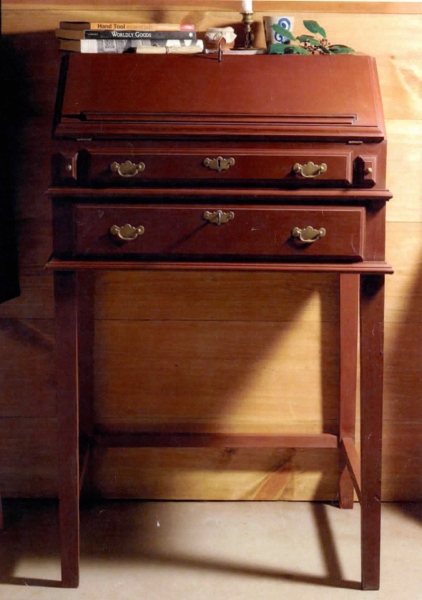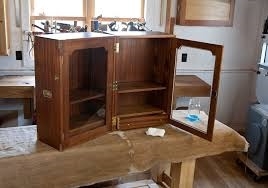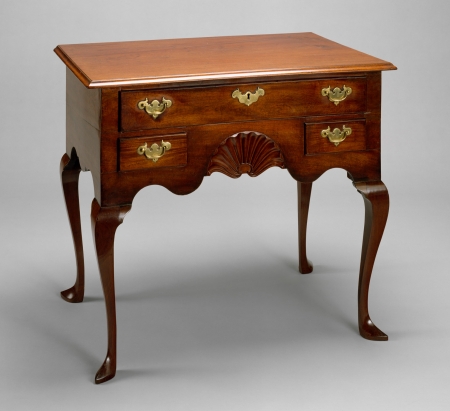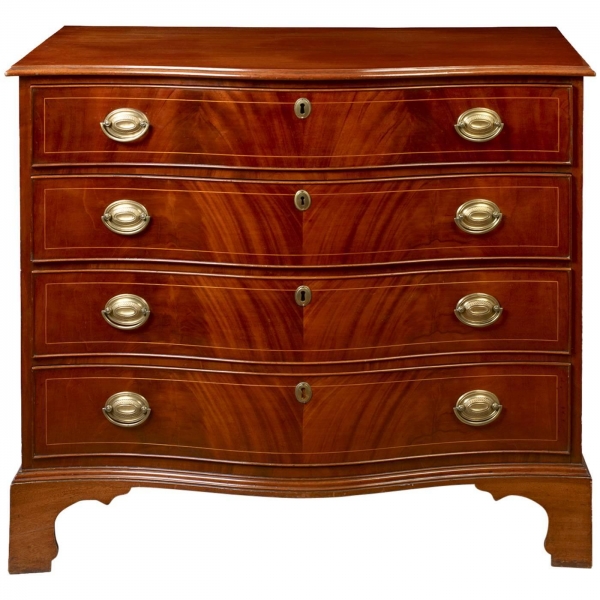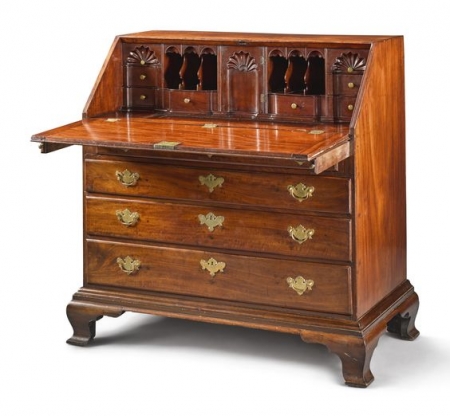Displaying 1 to 10 of 10
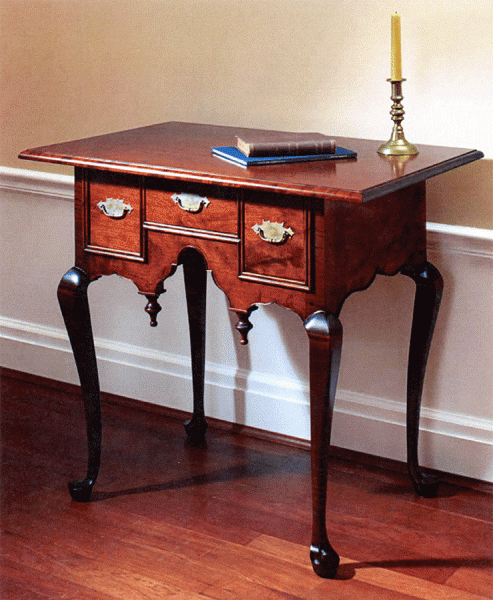
Connecticut Lowboy
by Glen Huey
While teaching a class at the Connecticut Valley School of Woodworking, I was asked to sneak down to the Connecticut Historical Society to take a look around. At the museum, I was shown into a back room full of off-exhibit furniture. Halfway down the first row of shelving, a mixed-wood lowboy caught my eye. “What a great piece,†was all I could say.
The drop pendants and drawer construction on this piece indicate it’s early Queen Anne. As I studied the images, I discovered what may be the easiest-to-build lowboy that I’ve ever seen. But if you dig into the details, you’ll find areas that test a seasoned furniture maker, such as applied cock beading and tapered drawer parts. Of course, these details can be omitted and the results would be still be top-shelf.
(Required: 3-104205) More Info
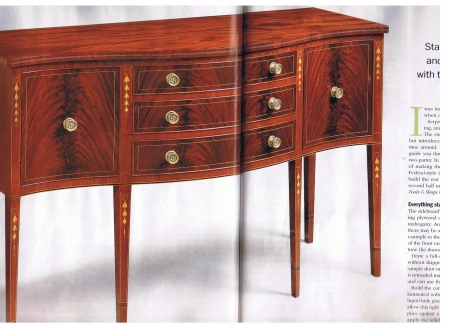
Federal Sideboard
Fine Woodworking
With its sweeping facade, this Federal sideboard is an ambitious project. The doors and drawers are curved and veneered with mahogany. The six legs—two rear corner, two front corner, and two front center—are all shaped to match the front so the serpentine curve is smooth and uninterrupted. The legs are adorned with one of the signature items of Federal-style furniture—bellflowers. Take the time to practice on each of these tricky parts and your final result will be well worth the effort.
(Required: 8-Knobs) More Info
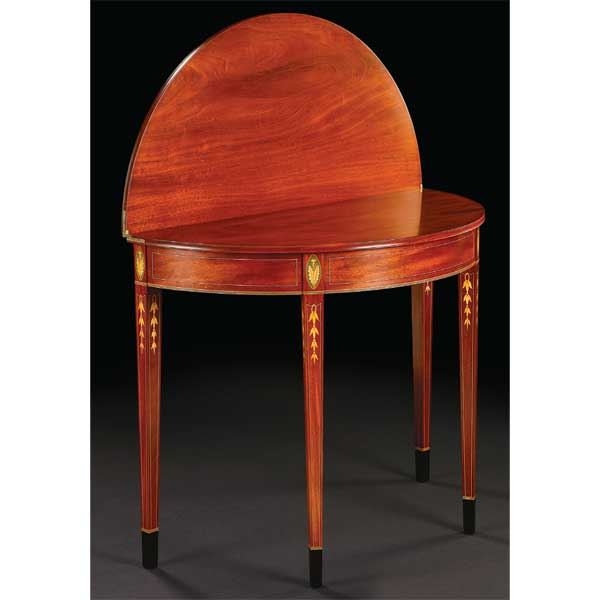
Demilune Federal Card Table
Fine Woodworking
It takes both traditional and modern techniques to build a demilune card table, a design that dates to the early years of American independence. This mahogany piece has a folding top, gate legs, and a curved, veneered apron constructed of bricklaid poplar. The back legs swing on knuckle joints, and the front and rear legs are tapered. The table, based on Baltimore pieces, is stylish enough to remain unadorned, but can also be embellished with inlay. More Info
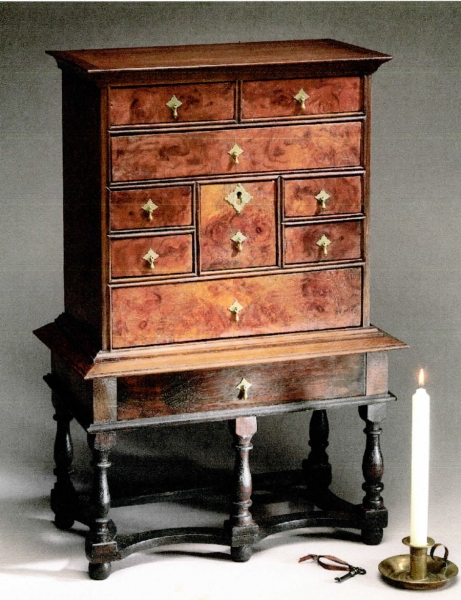
William & Mary Spice Chest
Popular Woodworking
In the early 18th century, the fashionable place to store household spices was in an attractive, lockable spice chest. These chests were status symbols, because having one indicated your household was wealthy enough to require an entire chest to store these luxuries. This chest was inspired by a circa-1720 William & Mary Philadelphia piece; I used period techniques and tools to build it. And while we no longer treat household spices as valuables, the chest provides handsome storage in my modern household.
If you build this piece the way I did, you’ll learn hammer veneering, hand dovetailing and how to cut curved shapes with straight tools. Perhaps most important, you’ll learn to be organized in your project planning. A piece this small (181â„2″ x 257â„8″) with so many similar parts forces you to stay organized.
(required: 10-WM 84, 1-WM 85, 1-Lock 7) More Info
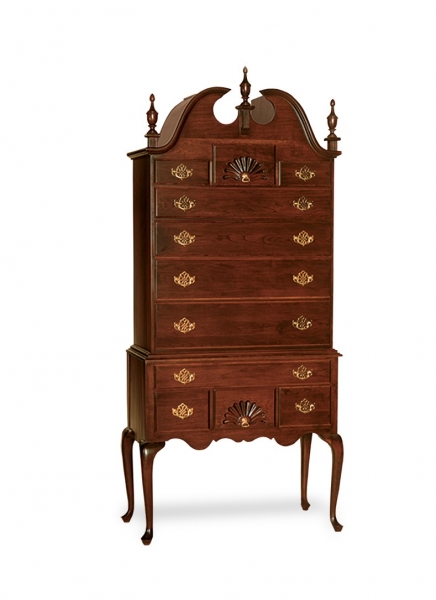
Queen Anne Style Furniture
1702 - 1714
Queen Anne (1665 - 1714) 1702 - 1714 was the last monarch of the House of Stuarts. The Queen Anne style is a refinement of the William and Mary style with lighter, graceful, more comfortable furniture. The single most important decoration of Queen Anne furniture was the carved cockle or scallop shell. Cabinetmakers replaced the straight, turned furniturelegs with more graceful cabriole furniture legs. The furniture leg had an out-curved knee and an in curved ankle.
Walnut became the preferred wood along with cherry and maple. Imported mahogany also began to be favoured. Regardless of the wood, a small amount of Queen Anne furniture was painted white. The feet in which the furniture legs of the furniture terminated underwent alteration and improvement. Ultimately claw and ball feet made their reappearance, and makes an attractive finish to the heavier type of cabriole furniture leg that evolved after the disuse of the stretcher. Scroll feet are generally associated with the earlier Queen Anne furniture, but there were also club feet, spade feet, the drake foot which was carved with three toes and a square moulded type of foot. Card and the collapsible bridge table or gaming tables were another Queen Anne innovation. Still popular is lacquer work, the rich oriental wares and china, the use of gesso design, and the Dutch marquetry cabinets, with their bombe sides and fronts and profuse decoration. More Info

